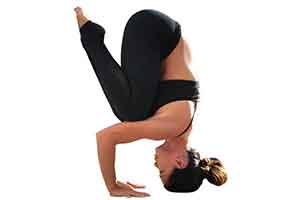Certain Yoga Positions May Impact Eye Pressure in Glaucoma Patients
New Study Highlights Importance of Patient Education During Glaucoma Awareness Month
 Glaucoma patients may experience increased eye pressure as the result of performing several different head-down positions while practicing yoga, according to a new study published by researchers at New York Eye and Ear Infirmary of Mount Sinai (NYEE) in the journal PLOS ONE.
Glaucoma patients may experience increased eye pressure as the result of performing several different head-down positions while practicing yoga, according to a new study published by researchers at New York Eye and Ear Infirmary of Mount Sinai (NYEE) in the journal PLOS ONE.
Glaucoma is the leading cause of irreversible blindness and can dramatically affect the quality of life for patients with moderate to severe visual loss. Damage to the optic nerve occurs in glaucoma patients when fluid pressure inside the eye rises. Elevated intraocular pressure (IOP) is the most common known risk factor for glaucomatous damage and, at the current time, the only modifiable one for which treatment has a proven effect on preventing or slowing the progression of the disease.
“While we encourage our patients to live active and healthy lifestyles, including physical exercise, certain types of activities, including pushups and lifting heavy weights, should be avoided by glaucoma patients due to the risk of increasing IOP and possibly damaging the optic nerve,” said Robert Ritch, MD, senior study author and the Shelley and Steven Einhorn Distinguished Chair and Director, Glaucoma Research, NYEE. “This new study will help clinicians advise their patients on the potential risk associated with various yoga positions and other exercises that involve inverted poses.”
In previous research, studies and case reports had tested only the headstand position, which showed a marked two-fold rise in IOP. In the new study, researchers had healthy participants with no eye-related disease and glaucoma patients perform a series of inverted yoga positions, including downward facing dog, standing forward bend, plow, and legs up the wall. They captured the IOP in each group at baseline seated, immediately assuming the pose, two minutes while holding the pose, right after they performed each pose in the seated position, and then again 10 minutes after resting in the seated position.
Both normal and glaucoma study participants showed a rise in IOP in all four yoga positions, with the greatest increase of pressure occurring during downward facing dog. When the measurements were taken after the participants returned to a seated position and again after waiting ten minutes, the pressure in most cases remained slightly elevated from the baseline.
“While our study results don’t show a dramatic difference in IOP between the normal participants and those with glaucoma, we believe that additional research, with a larger study population and longer durations of practicing the inverted positions is warranted,” said first author Jessica Jasien, M.En., research associate with the Shelley and Steven Einhorn Clinical Research Center at NYEE. “As we know that any elevated IOP is the most important known risk factor for development and progression of nerve damage to the eye, the rise in IOP after assuming the yoga poses is of concern for glaucoma patients and their treating physicians. In addition, glaucoma patients should share with their yoga instructors their disease to allow for modifications during the practice of yoga.”
The research team emphasizes the importance of educating glaucoma patients on all of the risks and benefits of relating to physical exercise and their overall vision health, as well as any other factors that might impact their glaucoma progression, including diet, lifestyle choices, and other co-morbid conditions such as diabetes.
Source Newsroom: Mount Sinai Health System
Citations
PLOS ONE

